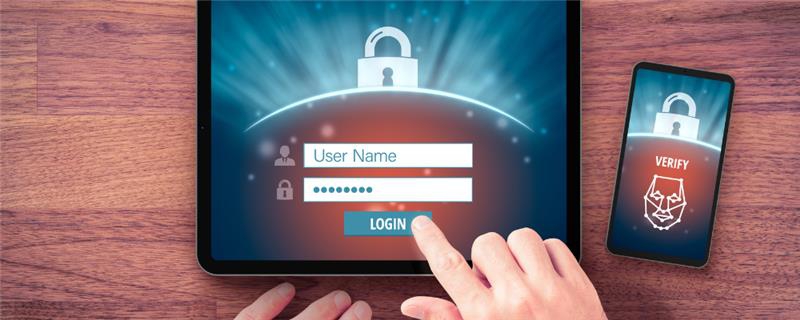
Updated 2:31 AM CST, Wed November 16, 2022
Published Under: Definitions Email Security Healthcare IT Services

What is Multi-Factor Authentication
When you sign into an account, you are authenticating that you are who you claim to be. Checking your email, accessing your bank account, checking out at the grocery store, and starting your car are all examples of authentication. Multi-factor authentication, also called 2-Factor Authentication or MFA combines different verification steps, making it much more difficult for your stuff – or your data – to be stolen.
The aim of MFA is to help us do an even better job of getting everyone who needs it the access they need without extending that to anyone who doesn’t.
What are the different types of Authentications?
There are four key ways that we prove who we are in everyday life. In these ways, we are essentially saying, “It’s okay. It’s me. I’m allowed.” Consider some of the ways you show you are allowed to do or use different things day to day. These verification methods aren’t always technologically sophisticated. They can be extremely simple. In fact, the technological ways we prove we have permission to access something tend to mimic older, more basic forms of authentication.
Location – Somewhere You Are
Because you are in a particular location, you are who you say you are.
Sometimes your physical presence in a particular space is a good indicator that you are an authorized user. There may be resources you have at work that are accessible while you are in that location but can’t be removed. For instance, patient files are often protected this way. Technologically, it might be that because you are connected to a particular network or near a Bluetooth signal, you have authorization.
Inherence – Something You Are
Because you have these physical attributes, you are who you say you are.
It wasn’t long ago that biometric authentication seemed like science fiction. Now it’s everywhere. Facial recognition, voice authentication and fingerprint scans are on our phones and computers and are being applied in new ways all the time. The same way that the pen strokes of your signature would reveal your unique hand movements, these biometric or inherence authentication methods look for your individual features.
Knowledge – Something You Know
Because you know this, you are who you say you are.
From passwords, to PIN numbers, to social security numbers, we are very accustomed to using little bits of knowledge to prove our identities. Security questions are another form of Knowledge Authentication. It can be both convenient and vulnerable that these methods of verification are highly transferrable. Passwords can be shared with others: sometimes intentionally, other times by accident.
Possession – Something You Have
Because you have this in your possession, you are who you say you are.
In many cases, something we actually have can verify we are ourselves. Many of us still start our car with a key, whether we place it in the ignition or just keep it in our pocket. The same is true of our homes. Because we have the key, we have shown we belong. Cards have replaced keys in many places. A scan card may get you into work. Cards get you into hotel rooms. It’s still very common to use cards to access our bank accounts.
Why is Multi-Factor Authentication Important?
Each method of authentication has its benefits and drawbacks. When any single form of verification can give someone access who should not have it, data security is difficult to enforce. Someone could discover your password or find your work badge. Biometrics can fail to authenticate. A particular location might welcome both people who should and should not have access to information. Crossing the strongest features of different methods can overcome many of these challenges. Someone might find a debit card but not know the PIN. Or someone who enters your office might need an additional key or password to access information.
Infographic from Google Security Blog
Because we nearly always have access to our phones, they can make a convenient second layer of protection. We enter a password for our email, files server, bank account, or website, and we receive a notification on our phone to verify we are trying to log in at that moment. It is particularly effective when biometrics, PINs or passwords are needed to access our phones.
What is an example of 2-factor authentication?
At VGM Forbin, we have 2-factor authentication enabled for many of the ways we encounter Personally Identifiable Information (PII) or Personal Health Information (PHI). Forbin and VGM understand the risks associated with having our clients’ and their customers’ information fall into the wrong hands. The costs associated with seeing that information compromised are greater than those required to proactively protect those customers’ personal data. We also protect crucial proprietary information in these ways.
In order to access our clients’ account information, site analytics, advertising accounts, and more, we need to input secure passcodes. Notifications are then pushed to an app on our phones asking for that second confirmation. In addition, It is required that our phones also be secured. While these small additional steps can slow us down by a few seconds, it has made it possible for us to securely work with the data we need from virtually anywhere.
What Should You Do Next?
If you and your staff work with PHI or PII, it is time to secure that data. Contact the Information Technology team at Forbin today, and you will be on the path to protecting that information and your business.
If your business doesn’t come into contact with these personal details, you may have time to consider the costs and benefits. It may be appropriate to update, now. Or you may choose to hold off for the moment. Our team is here to help you make the right decision for your business. Let us answer your questions.
.png)
Comments